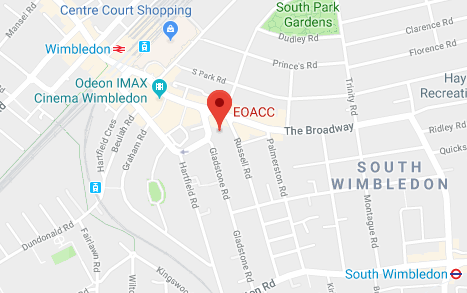Tax-Free Childcare and Childcare Vouchers
New or existing childcare vouchers?
The question on whether the new Tax-Free Childcare will be more beneficial to your family than the existing Childcare Vouchers is not an easy one. It depends on the number of children you have and the savings you currently make as a family by receiving childcare vouchers. It is also not a question on tax efficiency, as no direct tax benefit is gained with Tax-Free Childcare. Instead, a tax-free government contribution is received. The two schemes work very differently.
The main differences between the two schemes are outlined below:
| Tax-Free Childcare | Childcare Vouchers |
| Payments are per child, and not per parent | Vouchers are per parent, not per child and determined by the parent’s earnings* |
| The government contributes 20p for every 80p paid to a max of £2,000 per child per year | Limited company contractors: Dividend and Corporation Tax savings on a max of £2,915 childcare vouchers paid by the limited company;
Permanent employees: Tax and NI savings on a max of £2,915 salary sacrifice |
| Covers children up to the age of 12 (or up to the age of 17 for disabled children) | Covers children up to 1 September after their 15th birthday (or 1st September after their 16th birthday if they are disabled) |
| Neither parent must earn more than £100,000 p/y, but each must earn at least £120 p/w | No limit on parent’s earnings |
| Available from early 2017 for parents of the youngest children, and for all parents by the end of 2017 | Scheme closed to new entrants from April 2018. Parents already registered at that time can continue to receive vouchers for as long as their employer offers them, or switch to tax-free childcare instead (you can’t use both schemes) |
Here are the different amounts a family can get from the government with Tax-Free Childcare (assuming all conditions are met):
| Number of children | Government contribution (max) | Parents (or other family members) contribution (max) | ||
| 1 | £2,000 | £8,000 | ||
| 2 |
|
£16,000 | ||
| 3 | £6,000 | £24,000 | ||
| 4 | £8,000 | £32,000 | ||
| 5 | £10,000 | £40,000 |
The savings on Childcare Vouchers depend on the individual parent’s earnings and whether the parent is a limited company contractor or permanently employed.
Below we have calculated the total savings for a limited company contractor on the following assumptions for the 17/18 tax year:
- A basic annual salary of £8,160
- Total annual salary plus dividends exceeds £16,500, but not £100,000.
- No other relevant earnings*.
The total savings are different for basic rate (below £45k p/yr) and higher rate (over £45k p/yr) earners.
The company makes a corporation tax saving of £554.04 (19% of £2,915), which increases the retained earnings available to take as dividends.
| Basic Rate Earner | Higher Rate Earner | |
| Dividend Tax saving on Childcare Vouchers received tax free from your limited company | £218.70 | £947.70 |
| Additional earnings available to take as dividends, after deducting dividend tax, as result of Corporation Tax saving | £512.49 | £373.98 |
| Total net savings for the director | £731.19 | £1,321.68 |
*Please refer to the expense help on our website for more info on Childcare Vouchers: http://www.eoacc.com/services/contractors-and-freelancers
To determine which scheme is more beneficial for your family, you’d need to add the saving your spouse is making using Childcare Vouchers (if applicable) to the savings you’re making and compare that to the government contribution you would receive on the new scheme. Whichever is higher, would be the scheme to go for. Bearing in mind though, that if you leave the Childcare Voucher scheme, you will not be able to join the scheme again from April 2018. It would therefore be wise to compare the two schemes for the next few years and make a decision on the overall savings.
The new Tax-Free Childcare
The tax-free childcare account will be available from early 2017 for parents of the youngest children. All parents will be eligible to apply by the end of 2017.
Key features:
- Available to the self-employed and employees whose employer does not provide employer-supported childcare.
- Managed via parents’ online account.
- Government top-up of 20p for every 80p paid to a maximum of £2,000 per child per year for an £8,000 contribution by parents. The maximum top-up for disabled children is £4,000.
- Grandparents, other family members or employers can pay into the account.
- Both parents must be working the equivalent of 16 hours per week at the National Living Wage.
- Neither parent must earn more than £100,000 per year.
- Covers children up to the age of 12 and for children with disabilities up to the age of 17.
- Parents can withdraw money if they want to, but the government will also withdraw its corresponding contribution.
- Current employer-supported childcare arrangements (vouchers and contracted childcare) continue on condition employer is willing to continue them and employee stays with the same employer.
- Employer-provided nurseries are unaffected by the new scheme.
- Parents will reconfirm their arrangements online every three months.
Childcare providers:
- Only regulated and approved childcare providers will be able to receive payments from these accounts.
- Providers will need to sign up online in order to receive payments.
- Letters are to be sent to providers in September and October 2016 inviting them to sign up.
- Parents will be able to check whether a childcare provider has signed up to receive these childcare payments.
- Providers will need to have a Unique Tax Reference (UTR) to sign up if they are self-employed.


